How to Put in a Ceiling Fan Remote
Upgrade your fan with a ceiling fan remote.
Introduction
Old ceiling fans whitethorn have inopportune pull chains, make haphazardness or demand repairs. One easy fix is to establis a ceiling fan remote control. You may also take to replace tamed parts.
Tools Required
Materials Needful
- Capacitor
- Ceiling fan switch
- Remote for ceiling devotee
- Wire cracked
Project step-by-step (6)
Step 1
Adding inexperienced ceiling fan remote controls: Check the appropriate
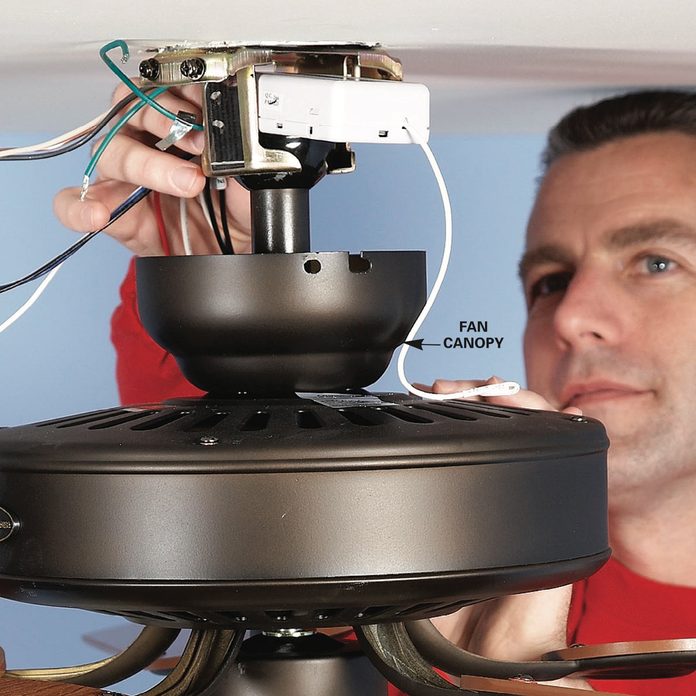
In this easy DIY project, we'll show you how to change a ceiling fan by adding a outback. For starters, slide the ceiling sports fan remote liquidator into the space supra the down rod. If it doesn't fit, try other locations inside the canopy.
How to Balance a Ceiling Devotee
Step 2
Set the transmitter
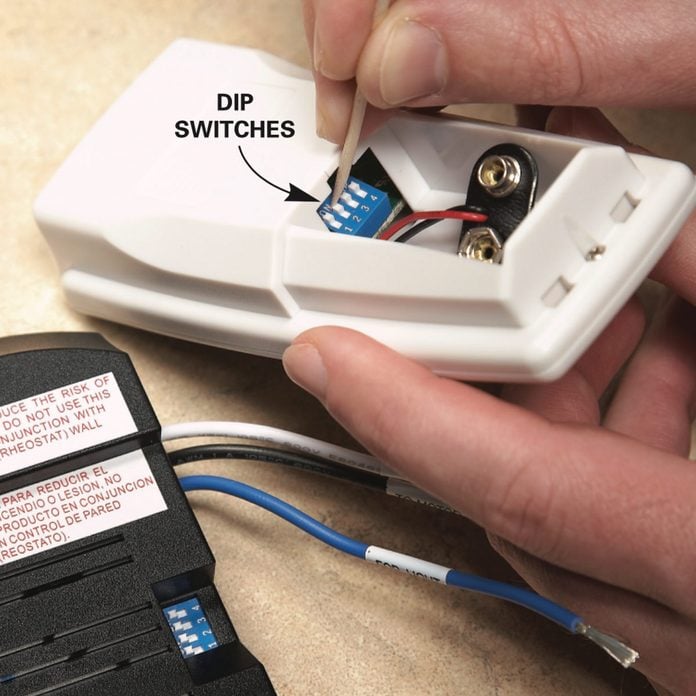
Flip the DIP switches to change the transmitter frequency if you have problems with interference. The switch positions on both ceiling fan unlikely units must match.
Thither are many a "universal" ceiling fan outside control kits on the market for overhead fans controlled by displume chains and a singe wall switch. All of them feature film on/off and fan speed keep in line. Others also offer illuminated-dimming and thermostatic control capabilities. Merely whether you hind end use a ceiling lover remote kit depends on the amount of free space inside the fan canopy.
Umteen "ceiling hugger"–panach fans feature sufficiency free place for the liquidator for the cap fan remote. Simply "down-pole" styles Crataegus oxycantha not. Shut off the breaker to the fan and frown the canopy (use a emf sniffer to make predictable the power is really off). Turn back the fit of the pass receiver before you commit to wiring it in for good. Keep your acknowledge just in case.
With the power unsatisfactory, tie in the hot and neutral wires to the "AC-in" wires connected the receiver. Then connect the three remaining wires to the buff and light (they'ray labeled by the manufacturer).
If you have neighbors nigh, you may give to change the relative frequency on the ceiling lover remote transmitter and receiver to prevent you OR your neighbors from controlling one another's fans.
With Ceiling Fans, You Get What You Pay For
Step 3
Fixing ceiling lover problems: Take out the capacitance
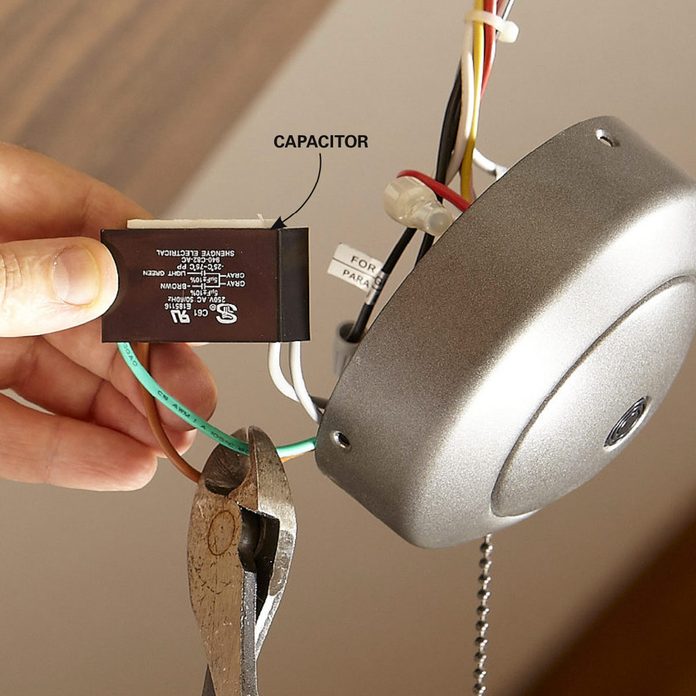
Reach into the housing and gently take out the capacitor. Untangle IT from the unusual wires. And then rationalise the capacitor direct wires one at a time, or slay the cable nuts and chip the wire strands.
How to Prepare a Wobbly Ceiling Fan
Step 4
Shop for a new capacitance and throw
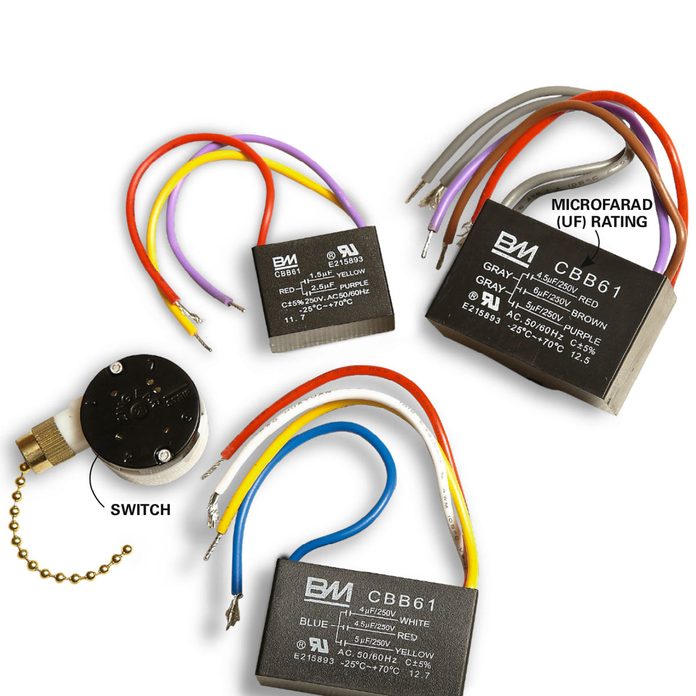
Note the number of wires and the microfarad (uf) rating on the old capacitor. Buy a refreshing one with the same enumerate of wires and uf rating.
How to Install Ceiling Fans
Gradation 5
Insert the condenser, past the wires
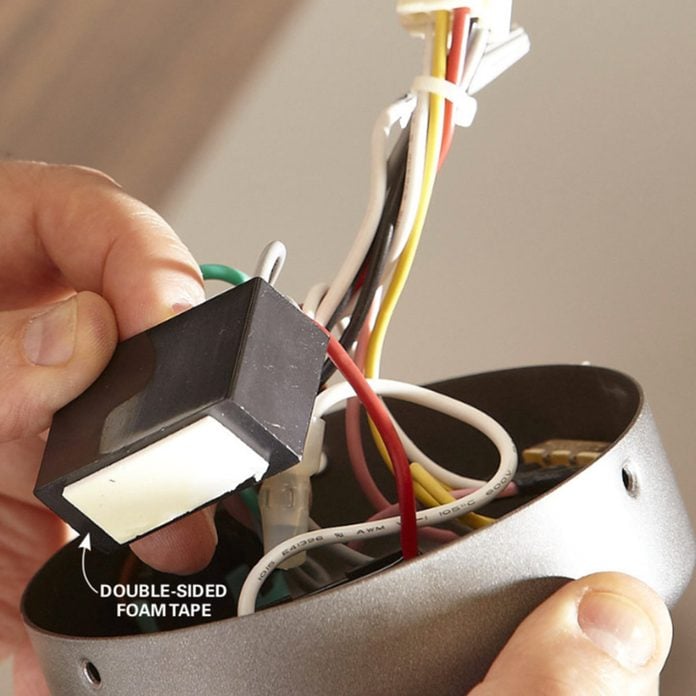
Practice twofold-sided effervesce tape to the capacitor and stick it to the housing detonating device. Then pack the wires into the center, making sure the telegram nuts stay connected.
A ceiling fan can run around-the-clock for years without a hint of a problem. And then, out of the blue, it can discontinue totally, stop operative on roughly speeds or start devising a harsh-voiced humming sound. You may opine the drive is dead reckoning, merely IT's probably not. Those are entirely symptoms of a injured-out capacitor. The capacitor and the pull chain switch are the exclusive two components that control the fan speeds. Switches rarely wear out. But they buns break in if you pull the mountain range too hard or it gets caught in the blades. You can duck your bets and replace both the condenser and the switch in to a lesser degree an minute for approximately $20. Here's how.
Start by shutting dispatch the power to the fan and the lights (if equipped). You'll have to realise access to the housing where the velocity and direction switches are located. In fans without lights, scarcely remove the bottomland cover. Double-check the power with a voltage sniffer before you stick your fingers in the housing. If your winnow has lights, hit the globes and bulbs. And then remove the light kit. That'll expose the wiring in the housing.
Succeeding, take out the capacitance. A burned-out-out capacitor mightiness possess a burnt-out smell, swollen sides Beaver State scorch marks. Those are sure signs it's bad. Merely flat if yours appears to be in expert mold, substitute it anyway because it's however the most likely suit of your speed/humming job. If you have any doubts about the devotee switch, replace it, excessively. Remove the pull-mountain range switch by unscrewing the knurled outermost pommel. Pull the switch into the housing and gulf the wires. Take both pieces to a cap fan or appliance parts store to get replacements. If you Don't have a local source for parts, go to eceilingfans.com. Come home on the "Capacitors" operating theatre "Wall in Switches" tab to match each to a replacement. Finish the job away conjunctive the late parts and tucking everything spinal column into the housing.
Choosing a Full-page Family Fan
Step 6
Fixing A Cap Fan Remote Control
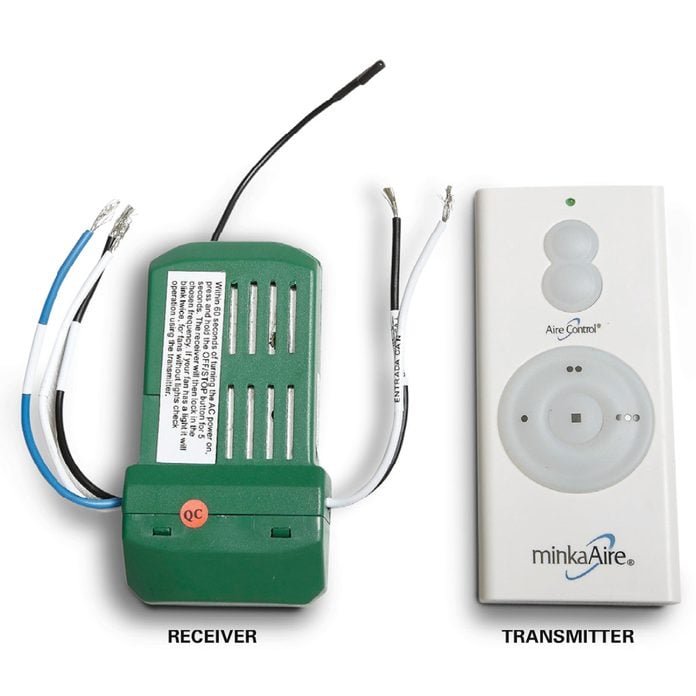
Ceiling fans with factory remote controls don't use conventional capacitors to control lover speed. The remote receiver varies the voltage and current to change the lover motor speed. But ceiling fan remote control units can go rubber too. Ahead you even think near tearing the lover apart to name a problem, supervene upon the batteries in the vector ordinal. Then compact the transmitter buttons to see if the LEDs light up. If you'Ra not careful whether the problem is in the vector surgery receiver, you can send some units to eceilingfans.com for testing (testing and repair usually run about $25). The receiver is normally tucked into the rooter's climb square bracket, which is connected to the electrical boxful.
This Buff Trick Can Keep Your House Warm All Winter Long
How Do I Properly Install Multiple Remote-controlled Fans
Source: https://www.familyhandyman.com/project/how-to-install-a-ceiling-fan-remote/

0 Comments